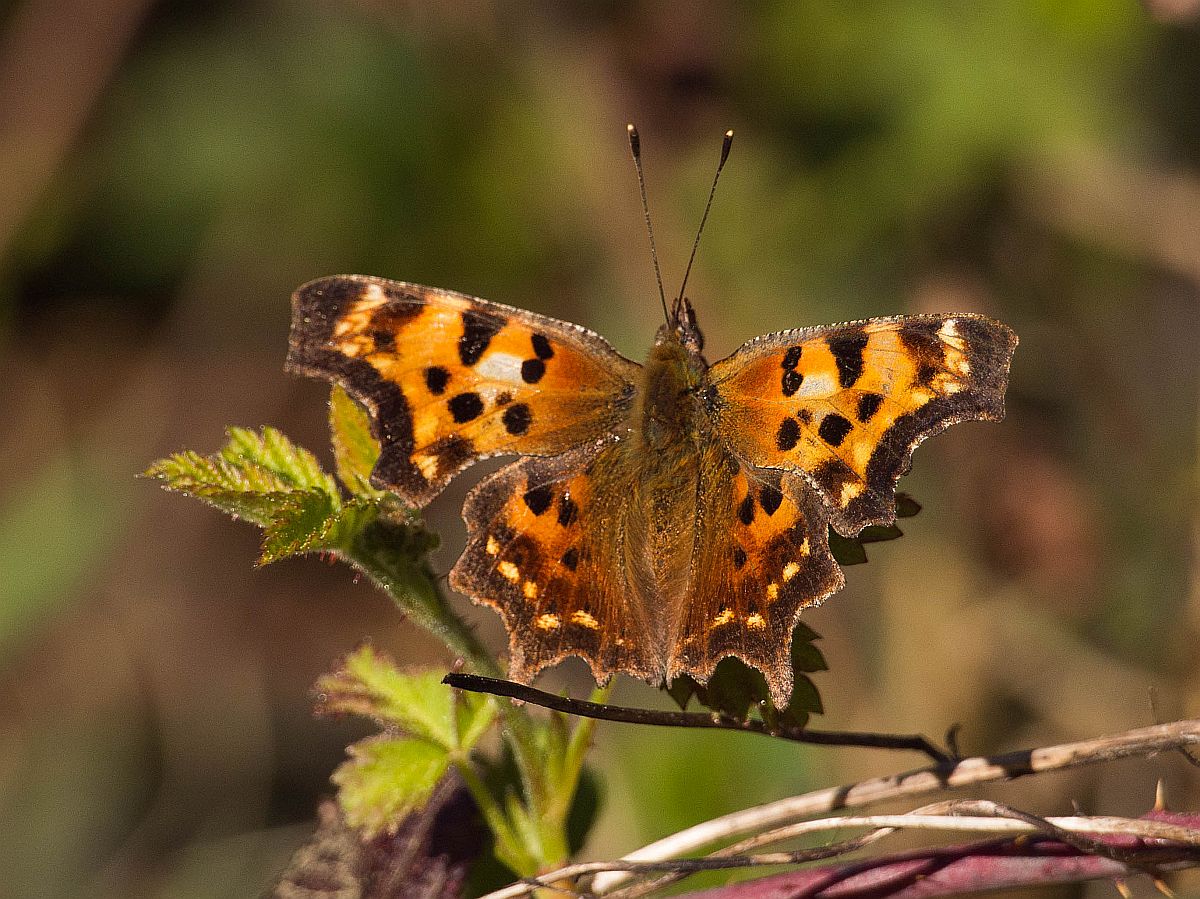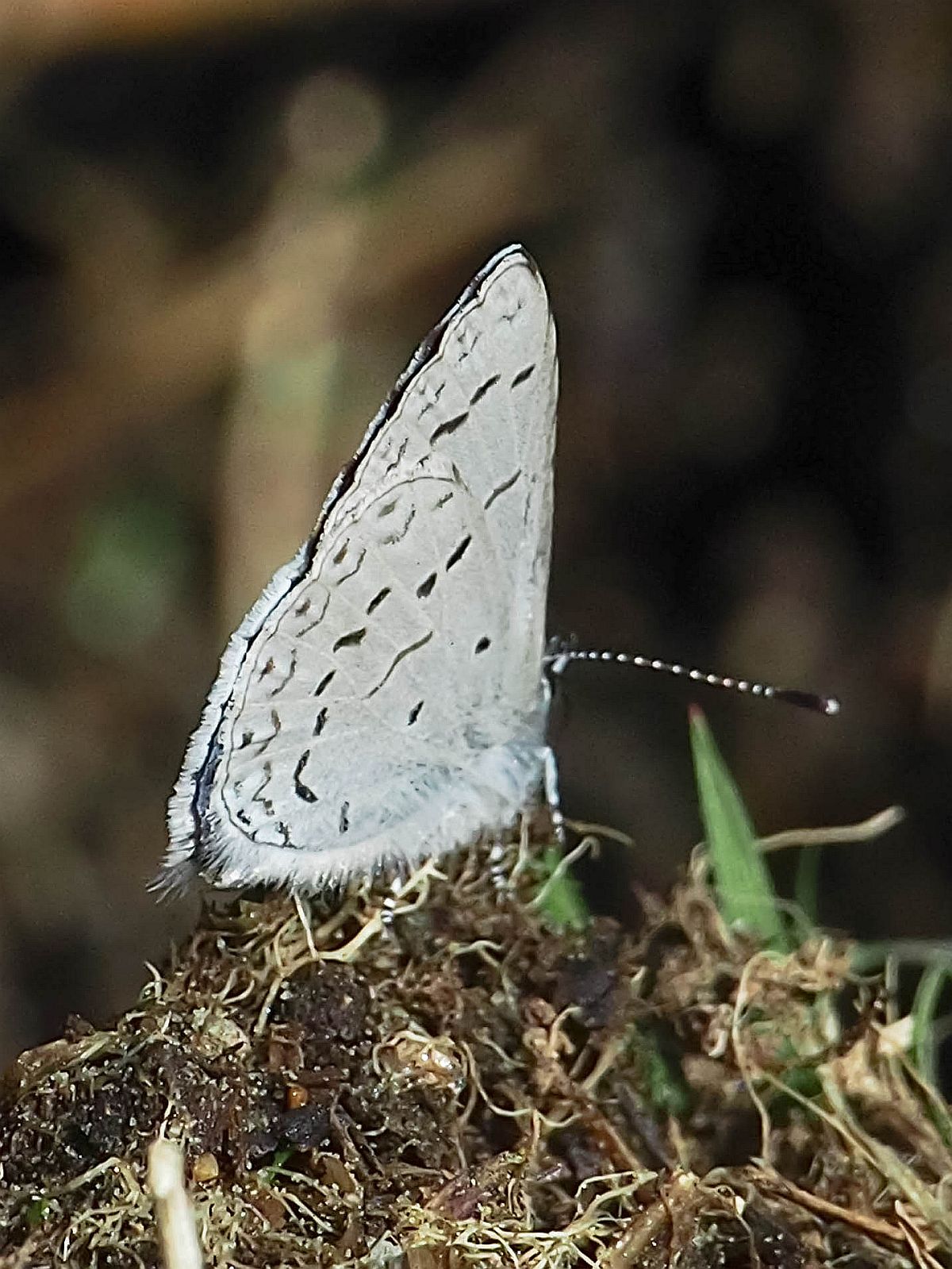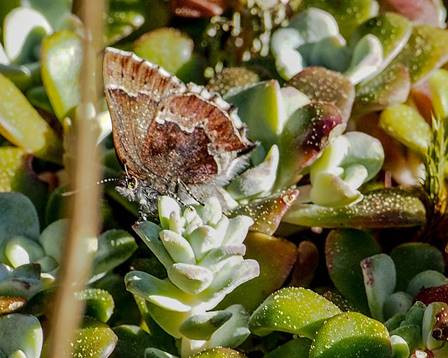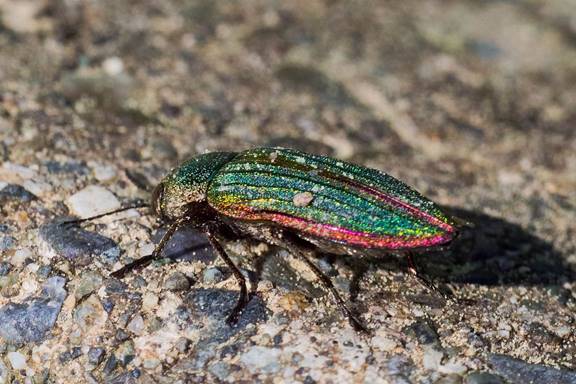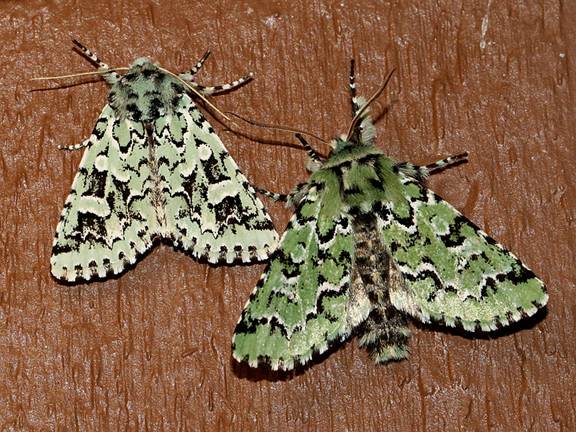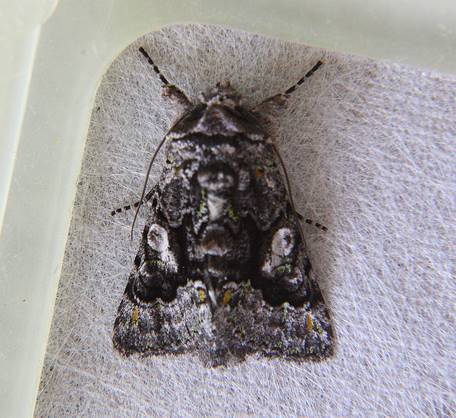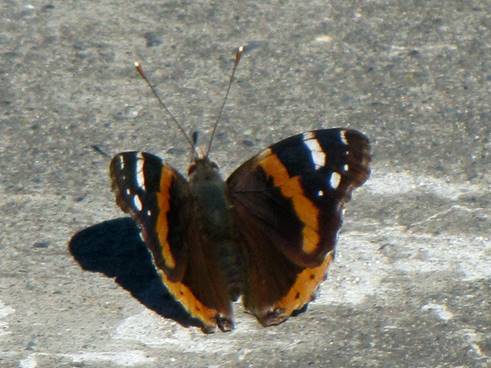2016 April 4
Annie Pang writes: I was at Gorge Park today (April 3, 2016) in Victoria, BC, when I spotted a wee winged creature that could only have been Mesoleuca gratulata commonly known as White Ribbon Carpet moth. This one flies by day and man, does it fly! It led me on a chase all over the park, often hovering over a leaf as if to land, but …well, not quite, and then off it went. I certainly had a frustrating time of it and actually found myself talking to the little beggar, imploring it to please LAND! Well, eventually it did alight on a leaf …..somewhat further away than I would have liked, but I just took the one shot I got and then it was off. They nectar on flowers and like to sun if they are cool and I have seen them lay eggs on Blackberry leaves and other members of that plant family during the day. I’ve heard it said that the color of this moth intentionally makes it look like a bird dropping so as to camouflage it from feathered predators, but I do think it is a pretty little one.
Song to a White Ribbon Carpet
A tiny little bit of flying cloth
a’flitting all about throughout the day
it is the White Ribbon Carpet moth
that had my heart and legs pounding away.
and when finally it landed on a leaf
I took the only shot that I could take.
It seemed to take delight in all my grief
to chase it all about. That little flake!
Your days are numbered though my little one
and so you make the most of time that’s yours
for soon in time when spring is all but done
your spirit will have flown to distant shores.
So fly and sun and mate and lay your eggs,
while I pursue you, on my aching legs!
© Annie Pang
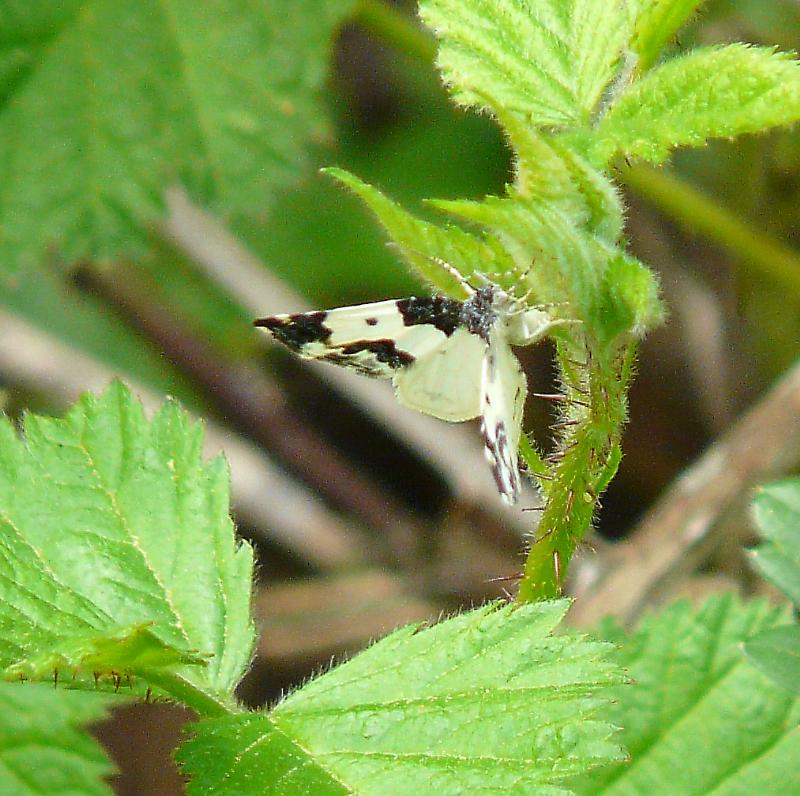

Mesoleuca gratulata (Lep.: Geometridae) Annie Pang
Jeremy Tatum comments: Butterfly and moth enthusiasts will recognize Annie’s description of so many day-flying geometrids – how they so often look as though they are just about to land – but they don’t! So frustrating! Annie’s moth in her photograph above shows the moth bending her abdomen while just about to lay an egg on a blackberry plant. If you look on the blackberry stem just to the right of her right wing-tip, you’ll see an egg standing between two of the blackberry spines.

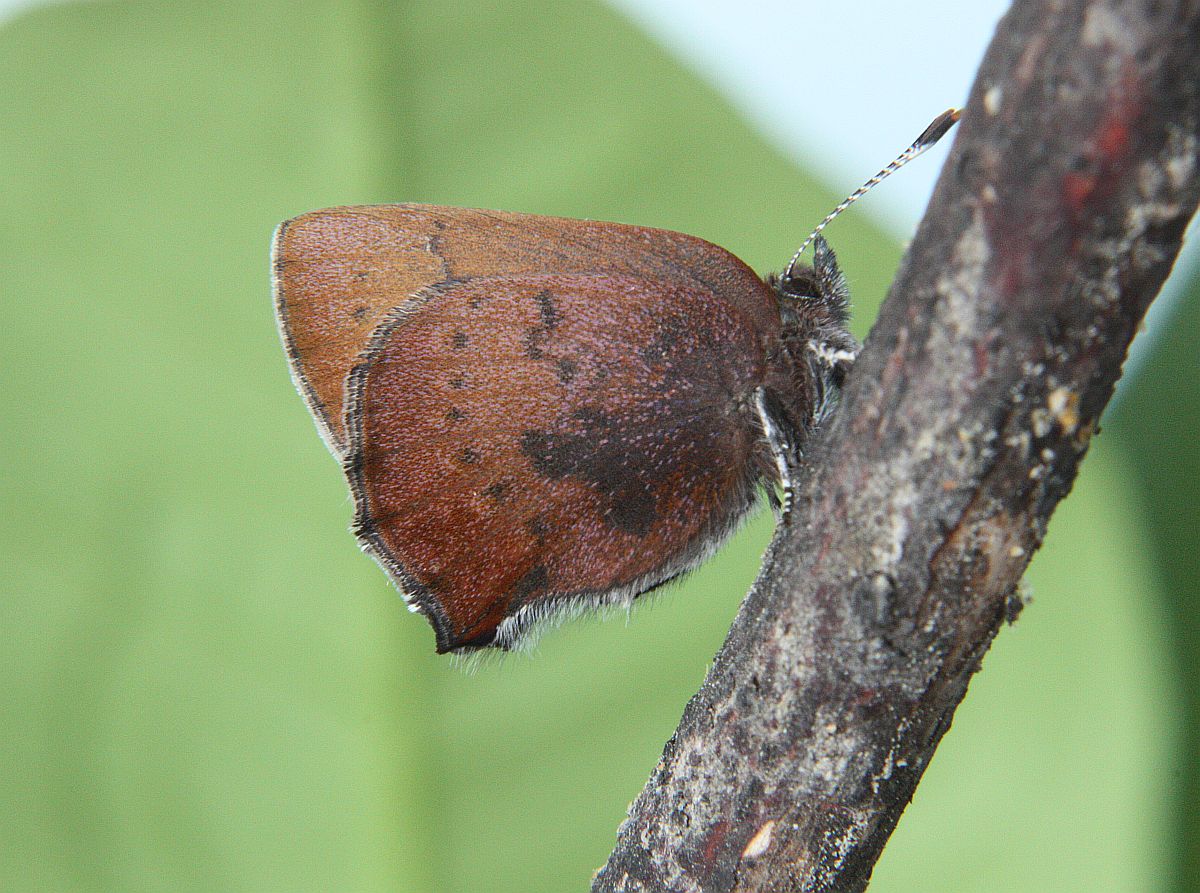
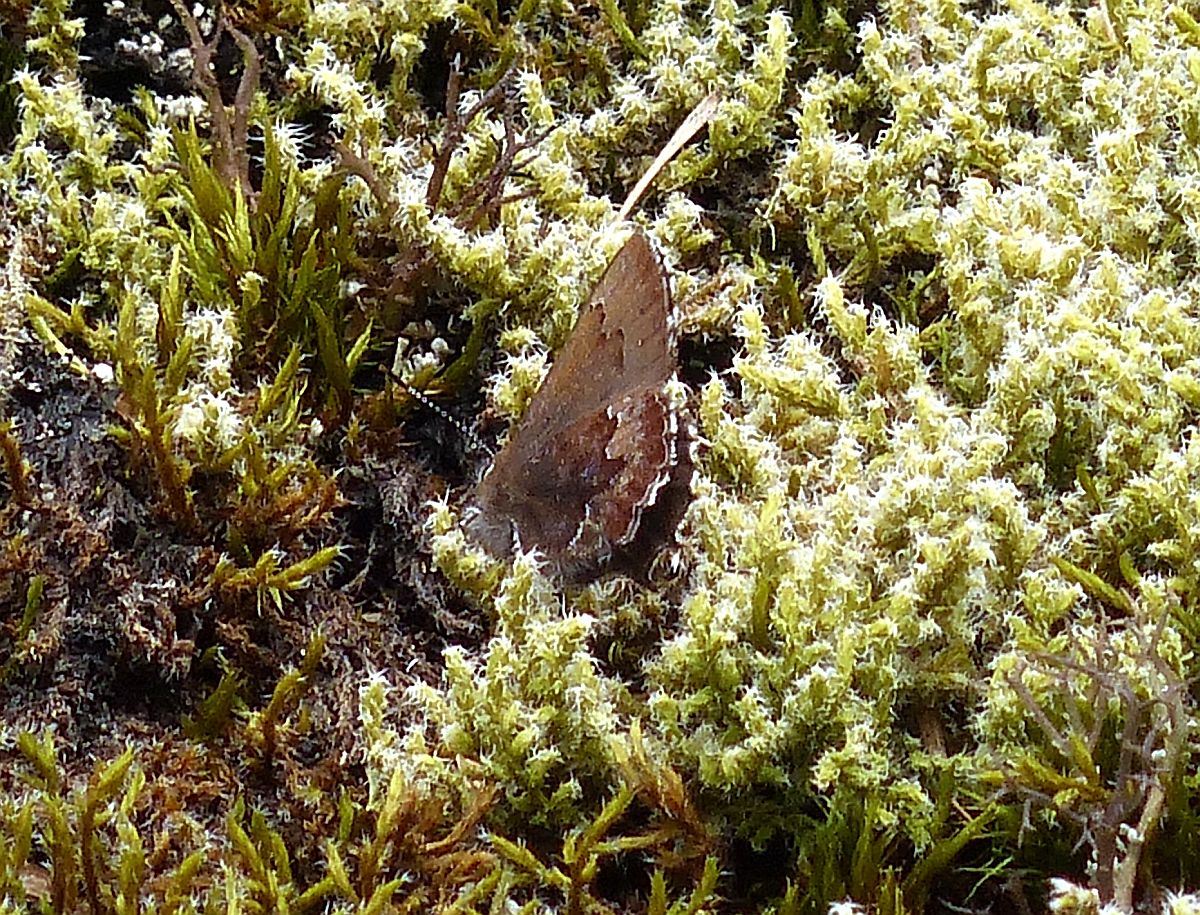
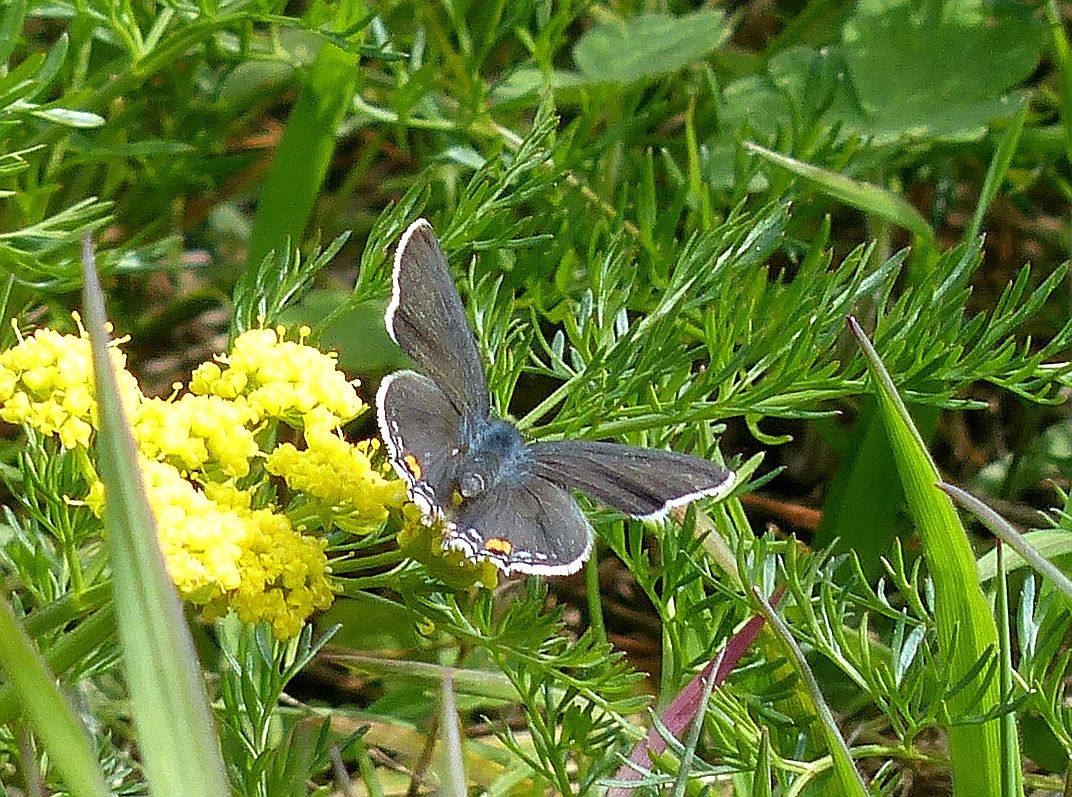
 Grey Hairstreak Strymon melinus (Lep.: Lycaenidae) Aziza Cooper
Grey Hairstreak Strymon melinus (Lep.: Lycaenidae) Aziza Cooper